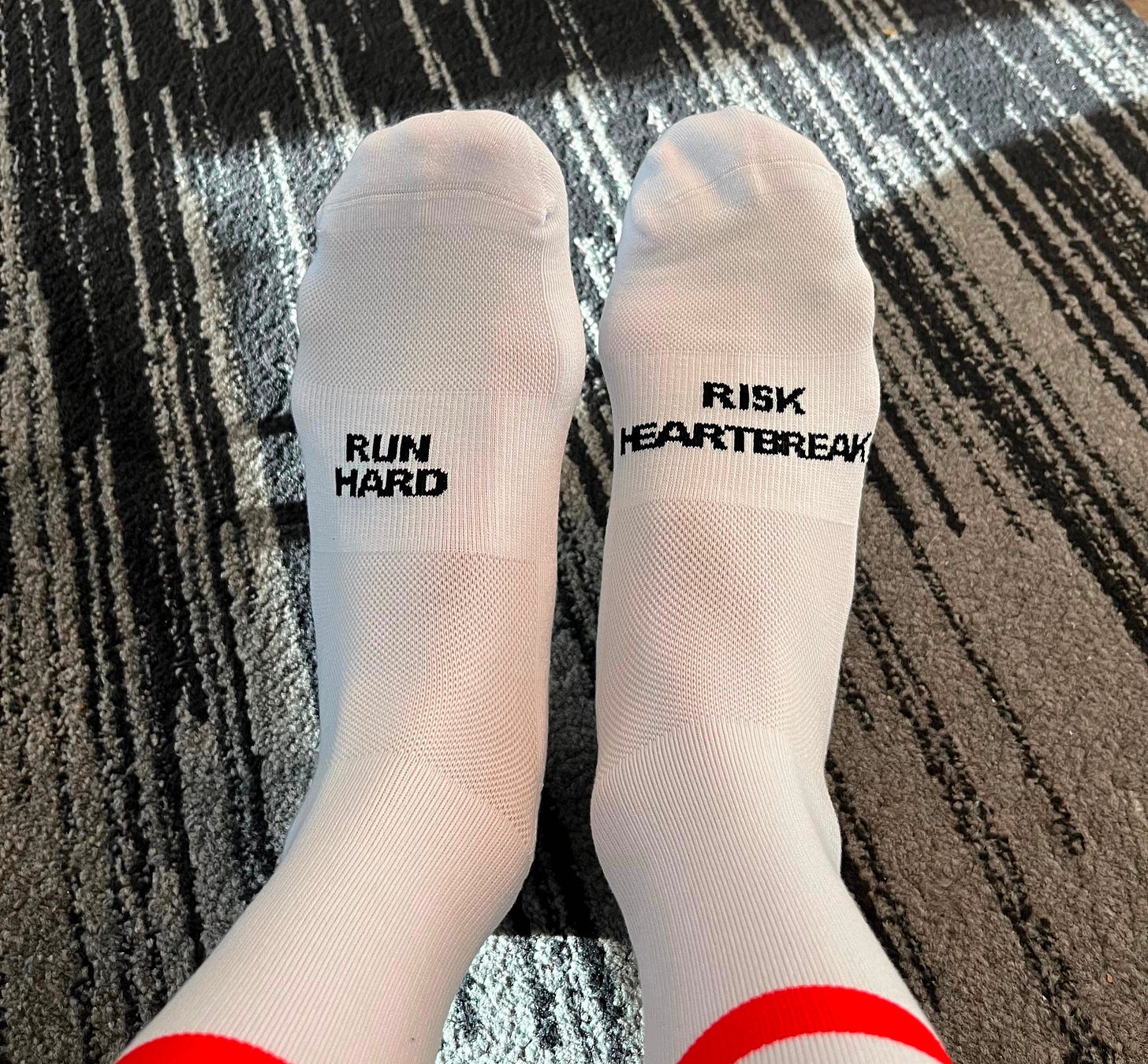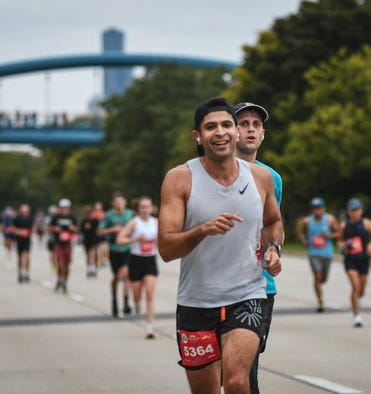Last Sunday, I ran my 4th Half Marathon in 1 hour and 46 minutes.
This was the finale of a summer filled with running. Throughout the journey, I learned so much that I wanted to share 6 key lessons from training and race day.
Interestingly, the lessons aren't just applicable to running but are good life principles.
1. When doing something difficult, surround yourself with friends.
When faced with challenges, our default mindset is "How do I overcome this?" But we should be asking "Who can help me overcome this?"
I tend to do things solo, but I've discovered people are the secret sauce. They can be inspiring, supportive, and keep you accountable.
Exhibit A is running clubs. They are having a moment, and I joined two this year, which turned me into a part-time morning person.
I spent Saturday mornings doing long runs with a crew of seasoned marathoners and first-timers. Long runs can be grueling and boring. Running groups take the bite out of them.
Actually, combining any exercise routine with people is an unlock — group fitness, gym buddy, a rec league, etc.
Use exercise to socialize and socialize to exercise.
2. What are You Going to Push Aside?
If you add anything significant to your life, other things will be pushed aside.
This is a function of time constraints and energy.
Training for a race is a mental drain as much as a physical one, especially if you have a time goal in mind. Just showing up isn’t enough.
Be an active participant in what will be subtracted. If you don't make the choice consciously, it will happen automatically.
Early morning runs removed late-night Youtube for me which I didn’t mind. But my creative endeavors, like writing, took a hit. My writing ritual at a coffee shop overlapped with my running ambitions. If I could rewind, I would have protected that time better.
3. Plan for the Gut Punch.
Mike Tyson once said, “Everyone has a plan until they get punched in the face.”
For runners, that punch is often an injury. I met people who had:
Groin tears
Calf strains
Foot fractures
Others had random bad luck. One had their Crohn’s disease flare-up, and another slammed their face on the pavement.
For me, it was COVID, weeks before race day. It wiped out multiple big runs, leaving me less confident and more anxious.
It takes discipline to follow the plan and hit every workout, but if nothing punches you, consider yourself lucky.
Life is filled with you planning and God laughing.
4. Remove Uncertainty as Best You Can.
As race day neared, I scribbled down every unknown that I could.
What time will I arrive at the race?
What’s the weather going to be?
What’s my pre-race meal?
What am I wearing?
How many gels and at what times will I take them?
Turning unknowns into knowns saves mental bandwidth for race day and offers a peace of mind that puts you at ease.
Knock out the unknowns whenever you have an anxious, high-stakes event. This could be something simple, like knowing what you will wear the day of.
Of course, after thinking of everything, what’s left is risk.
Bad weather, a lack of a bowel movement, or an inaccurate GPS signal are common race day misfortunes.
5. Never Set a Goal, Set a Range.
If there is uncertainty, there are a range of outcomes. So don’t base success or failure on a single goal.
Weeks before race day, I wrote down 3 different versions of me crossing the finish line.
A goal: 7:50 pace - 1 hr 42 min (Overachiever)
B goal: 8:00 pace - 1 hr 44 min (Sweet Spot)
C goal: Less than 8:15 pace (New PR)
I felt uneasy right up until the starting line. I abandoned “A” goal and pivoted to “B”.
I started ok, pacing at 7:57 for the first 9 miles then abruptly hit a wall. Then the wheels started coming off.
I fell off the pace group I was running with, and then someone I knew passed me1.
My watch now read 8:01 and my current pace was 8:33.
The negative self-talk started seeping in. I started telling myself the race was already over and I didn’t hit my goal.
Then I snapped out of it. I shifted my mindset to “C” goal. Get to the finish at 8:05-8:10. All was not lost. There was a version of me that I imagined that could still finish.
Miles 11, 12, and 13 were grueling. I was constantly looking at my watch and looking for the finish line.
I gasped into the finish line at 8:07, shaving off 90 seconds off my previous personal record. I was disappointed but not devastated.
6. “Slow Dopa” Gives You Lasting Satisfaction.
“Slow Dopa” is doing something hard and holding out for the reward.
Most of us are addicted to the fast-acting stuff that leaves us empty. The slow version, though more challenging, builds lasting satisfaction.
Crossing the finishing line on race day gives you all the feels, but there are a bunch of slow-acting releases on the way to race day:
Maintaining the same heart rate but running at a faster pace.
Hot, hard, slow runs turn into cooler, easier faster runs.
Getting accustomed to hard runs in the early morning
Running 10 miles without feeling fatigued afterward
It’s not just dopamine but the feeling of progress. It motivates us to push forward.
We pretend we want an easy life. The truth is life’s best moments come from overcoming hard shit. It's not about lounging on a beach; it's about crossing finish lines with no breaths left.
My advice is to do something hard often and embrace the struggle.
Running showed me that I can be a morning person, run long distances, and push myself even when my body tells me to stop.
Thanks for reading!
Irfan
If my writing brought you value, please share it with someone else.
Not a subscriber? Sign up for free below.
This person later told me they saw me struggling. They asked if I wanted help but I didn’t hear them. Even on race day, you don’t need to run alone.





